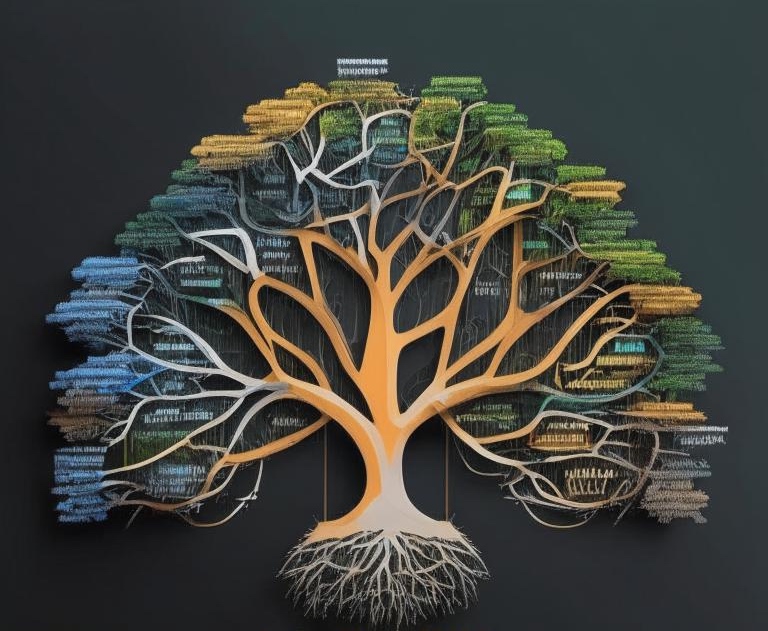The Tree and the Leaves
by Oleg Sovetnik
The types of elements in the umwelt are the foundation for linking the conceptual world with code and for creating automated tests.
To structure the umwelt, we separate the semantic and syntactic (structural) parts. The semantic part is responsible for the tree of concepts, while the syntactic part covers the operational aspects.
Semantic Part: Tree of Concepts
The semantic part of the umwelt is a hierarchical structure of concepts, which can be compared to modules in programming. Each concept has its place in the context of another, creating a tree structure where:
- The root is the primary concept or idea.
- The branches are nested concepts that clarify or extend the meaning of the root.
Connections between concepts can be both contextual (“where” the concept is located) and abstract (“what” the concept represents). Contextual connections allow us to trace the relationship between concepts in the tree, while abstract connections enable transitions between different levels of abstraction.
This semantic structure is essentially our “tree of modules.” Each concept must be linked to a module in the code, where each module, like a branch in the tree, can contain nested modules.
Syntactic (Structural) Part: The Leaves
The structural part represents the so-called “leaves” of the concept tree. Unlike the semantic part, it is strictly limited and does not allow nesting. Each element in this part is a specific, self-contained unit of information that can be directly used in the code. In the syntactic part, we work with more detailed elements such as attributes, data structures, function signatures, fields, and examples.
Context and Abstract
In the mindmap, each element exists in the context of another. Additionally, we sometimes need to link data with its types in the leaves of the tree. To represent this feature in the mindmap, we add an abstract connection with another element, answering the question “what is it?”, in addition to the contextual connection, answering the question “where or in what context is this mindmap element located?”
umwelt mindmap structure
